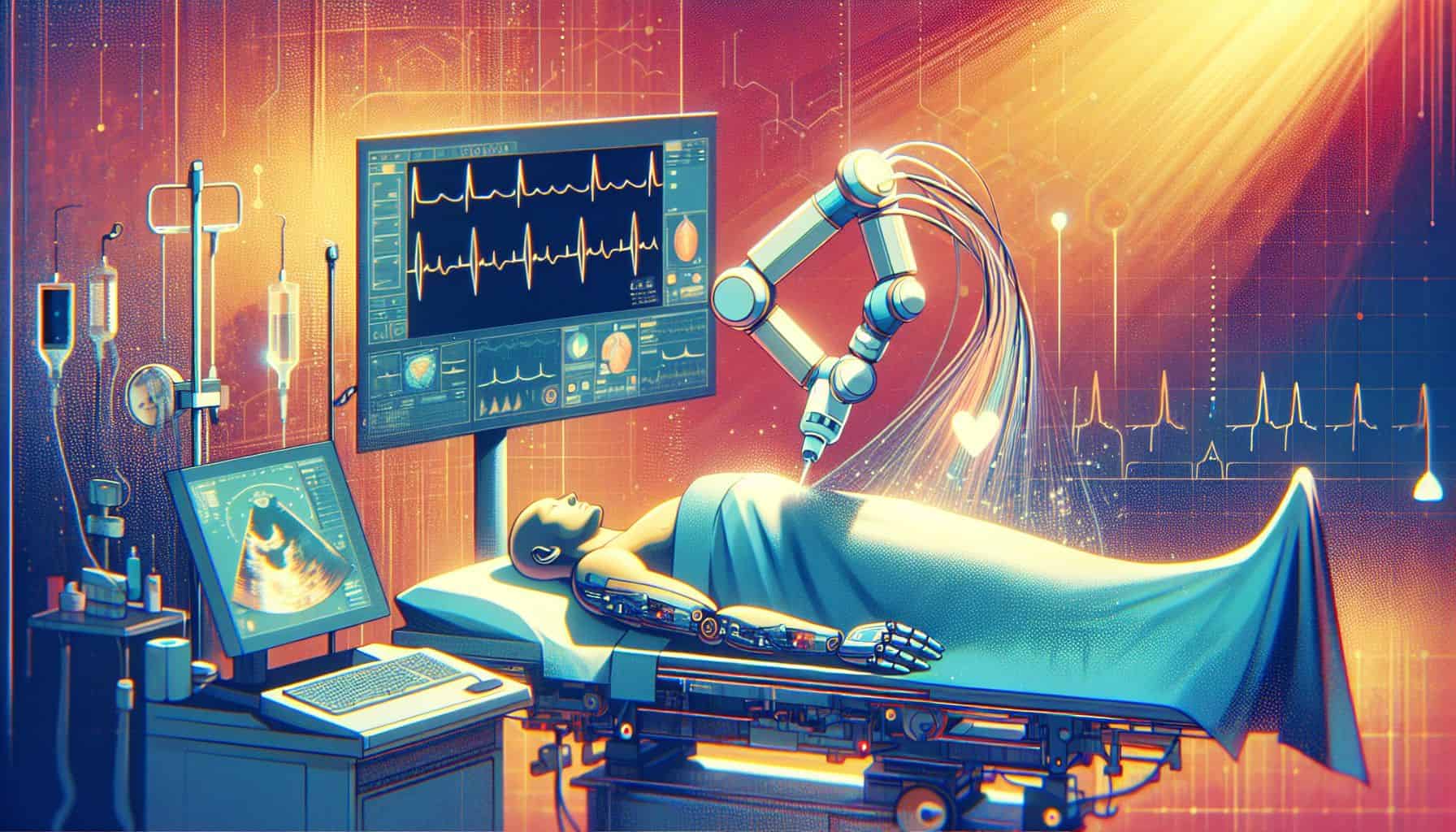
A newly released study has shown that remote echocardiograms performed remotely using a robotic arm and 5G technology are 98% as accurate as those conducted in person. The findings, by researchers at the Chinese Zhongshan Hospital, offer a glimpse into a future where patients with limited access to cardiac care can receive high-quality diagnostics without the need to travel. In a trial involving 51 patients, only one missed diagnosis was reported, with the technology also reducing the risk of infectious disease transmission like COVID-19. Despite taking longer to capture images, this innovation marks a significant step towards more accessible and safer cardiac healthcare.
Performing remote echocardiograms, employing the latest 5G cellular networks, bridges the gap between rural patients and the advanced diagnostic tools typically available in urban centers. The study engaged 51 patients from an outpatient clinic 20 kilometers from Zhongshan Hospital. The study’s success hinges on the robotic arm’s impressive ability to replicate the precision of a cardiologist’s hand, capturing images critical for accurate diagnosis.
Of the 51 patients involved, 50 produced echocardiograms of sufficient quality to facilitate a reliable diagnosis. This accounts for a diagnostic congruence of 98% when compared to traditional, in-person echocardiograms—a figure that holds promise for widespread clinical application. However, it’s noteworthy that the single missed case involved a missed papillary muscle level obstruction.
Technology meets healthcare
While the robotic system’s diagnostic accuracy is the study’s highlight, its potential for reducing the risk of infectious disease transmission is also significant. Amid the COVID-19 pandemic, minimizing contact between healthcare providers and patients has become a priority. The remote echocardiogram system allows for this distance, offering a safer environment for both parties. The robotic arm echocardiograms were able to diagnose heart problems in 17 of the patients, including severe conditions such as valvulopathy and hypertrophic cardiomyopathy.
One caveat to using remote echocardiography is the increased time required to acquire images. The process takes approximately 50% longer than the traditional method, a difference of about eight and a half minutes. Yet, the benefits of reduced travel and exposure risk may well outweigh the longer examination times for many patients and healthcare providers.

Clearance and current use
Previous iterations of the robotic arm technology have already been approved for clinical use in various regions, including China, Europe, Australia, and Singapore, for abdominal scanning. The success of this study suggests that echocardiograms could be the next frontier for remote robotic diagnostics. Dr. Xianhong Shu of Zhongshan Hospital emphasizes the system’s potential to enhance medical resource accessibility, reducing travel to larger medical centers for expert consultations.
Looking to the future of robotic-assisted echocardiograms
Despite the encouraging results, the research team advocates for a larger, multicentre study to further validate the findings before broad implementation in clinical practice. The availability of 5G technology, which is central to the system’s operation, may also pose a limitation to immediate widespread adoption. However, the groundwork has been laid for a future where remote robotic echocardiograms could become an integral part of cardiac care.

